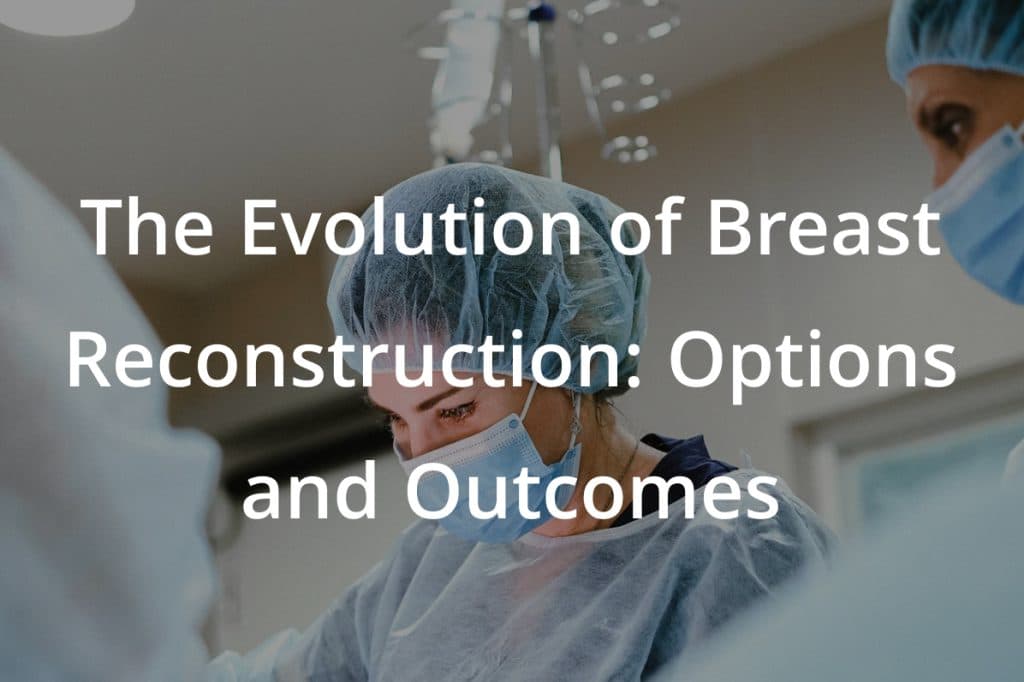
Breast reconstruction surgery has undergone significant advancements over the years, offering new hope and improved outcomes for patients undergoing mastectomy due to breast cancer or other conditions. Dr. Som is deeply committed to providing his patients with the latest and most effective breast reconstruction techniques, ensuring that both the physical and emotional aspects of recovery are addressed. This blog explores the evolution of breast reconstruction options, the latest surgical techniques, and the comprehensive outcomes for patients, focusing on their emotional and physical journey toward recovery.
Historical Perspective and Modern Advancements
Initially, breast reconstruction was primarily focused on purely aesthetic outcomes, often without considering the emotional and psychological impact on the patient. However, today’s approaches are much more holistic, aiming to restore physical form and support the patient’s psychological well-being.
Autologous Reconstruction
To recreate the breast, this technique uses tissue from another part of the patient’s body, such as the abdomen, back, or buttocks. The most common procedures include the DIEP flap (deep inferior epigastric perforator), which uses abdominal skin and fat while preserving muscle, and the TRAM flap (transverse rectus abdominis muscle), which involves transferring abdominal muscle along with the skin and fat.
Implant-Based Reconstruction
This method involves placing an implant to form the new breast. Recent advancements include using acellular dermal matrices (ADM) and highly cohesive silicone gel implants that provide more natural shapes and textures, improving aesthetic outcomes and durability.
Fat Grafting
An adjunct technique often used in conjunction with other methods, fat grafting involves liposuction to remove fat from one area of the body, which is then processed and injected into the breast area to enhance shape and softness.
Innovations in Surgical Techniques
- Pre-pectoral Reconstruction: A newer technique where the implant is placed above the pectoral muscle, reducing pain and recovery time compared to traditional under-the-muscle placements. This method also avoids the animation deformity associated with submuscular placements, where the implant moves during muscle contraction.
- Nipple-Sparing Mastectomy and Reconstruction: This approach preserves the nipple and areola during mastectomy, which can improve cosmetic outcomes and help maintain a sense of normalcy post-surgery. This technique suits certain patients depending on the cancer’s characteristics and location.
- Robotic and Minimally Invasive Techniques: The use of robotic surgery in breast reconstruction is growing, allowing for more precise and less invasive procedures. These techniques can reduce scarring and expedite recovery times, enhancing patient satisfaction.
Understanding Patient Outcomes
- Physical Recovery: Modern reconstruction techniques have improved significantly, offering both cosmetically appealing and functional outcomes. Patients generally experience better symmetry, natural feel, and overall satisfaction with their reconstruction results due to these advanced techniques.
- Emotional and Psychological Impact: Emotional recovery is as important as the physical. Breast reconstruction can profoundly impact a patient’s self-esteem and body image. Many patients report feeling a sense of restoration and normalcy after reconstruction, significantly contributing to emotional healing.
- Long-Term Satisfaction: Studies show that the long-term satisfaction rates among breast reconstruction patients are high, mainly when they are well-informed about their options and involved in decision-making processes regarding their care.
The Role of Support and Education
- Patient Education: Dr. Som emphasizes the importance of patient education before surgery. Understanding the different options, what to expect during recovery, and the potential risks can help patients make informed decisions that align with their personal goals and medical needs.
- Support Systems: Support groups, counseling, and therapy can be integral to recovery. Many patients benefit from sharing their experiences with others who have undergone similar journeys.
- Follow-Up Care: Regular follow-up appointments are crucial to monitor the health of the reconstructed breast and the patient’s overall well-being. These appointments are vital for catching any complications early and discussing any concerns that may arise post-recovery.
Conclusion
Breast reconstruction has evolved into a sophisticated field that not only restores physical appearance but also plays a crucial role in the emotional recovery of patients dealing with breast loss. With the ongoing advancements in surgical techniques and materials, patients today can access various options that offer excellent outcomes. Dr. Som is dedicated to guiding his patients through this complex process, providing expert care that addresses both the physical and emotional aspects of breast reconstruction. For anyone considering breast reconstruction, understanding these options and outcomes is the first step towards making an empowered decision about your health and recovery.
Previous Post Next Post